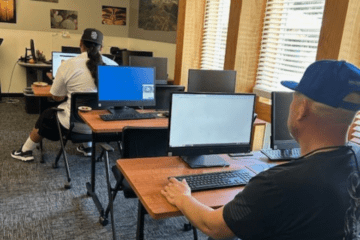Earlier this year, I wrote about our efforts to assist California in transitioning from plain old telephone service to high-speed internet, as part of the current innovation era. Bridging the digital divide and expanding access to high-speed internet is a priority for AT&T, and we consider it urgent.
We believe connectivity is today’s great equalizer and want to set Californians up for success. This means providing fast, reliable internet for all, including the relatively small number of consumers on traditional copper networks in California.
Since March of 2023, we have engaged with the California Public Utilities Commission (CPUC) on this issue and with customers, first responders, and community leaders through 250 meetings across the state. We listened to feedback statewide about how best to transition customers from an outdated copper network to more flexible, reliable, and sustainable communications technologies, including fiber and wireless.
Unfortunately, the CPUC is seeking to delay this transition for another 4-5 years, despite the growing demand for high-speed internet from both the public and private sectors. They are doing so at a time when state budgets are under pressure and transformative technologies are on the horizon. The pace of innovation is too fast to wait, and we need clear rules and action today to prevent Californian’s most vulnerable communities from falling behind.
The good news is that we did a lot of listening over this time; we took the feedback to heart and heard from state lawmakers on this issue. And now we’re seeing action.
Today, Assemblymember Tina McKinnor (D-Inglewood) announced a new proposal (AB 2797) that modernizes regulations while introducing some new provisions that simultaneously take care of California’s most vulnerable communities and ensure California remains a leader in innovation. The proposal offers some changes to the original plan and helps put consumers first:
- Recognizing the unique connectivity challenges faced by rural1 communities, this proposal does not impact customers in rural areas
- Ensuring multiple service choices for customers as options to their plain old telephone service
- Ensuring access to reasonably priced service alternatives
- Ensuring similar or better than “plain old telephone service” for customers before any transition occurs
- Creating a transition path with plenty of notice and clear expectations
- Providing education and outreach to local and Tribal governments, public safety officials, and disadvantaged populations throughout the transition
- Supporting digital equity, literacy, and training programs through community-based organizations to ensure access to advanced services
- Guaranteeing reliable communications and 911 access during emergencies
Keeping California at the forefront of innovation requires preparing consumers for the future. With the support of policymakers who are committed to keeping Californians connected, we can help protect all customers while bringing modern communications to all who want it.
1 As defined by the U.S. Census





